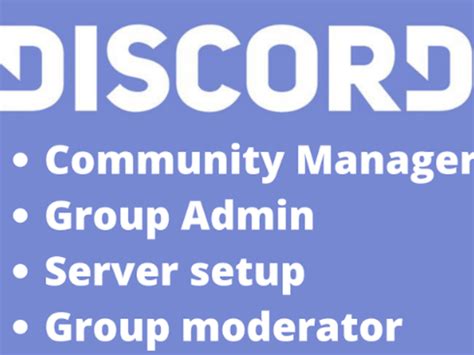Tips for Managing and Moderating a Discord Community

Defining the Community’s Purpose
The purpose of a community plays a vital role in shaping its identity and establishing a sense of belonging among its members. Defining the community’s purpose is a crucial step in creating a space where individuals with shared interests can come together, connect, and collaborate. It provides a clear direction and sets expectations for the community, ensuring that everyone is on the same page.
One of the key benefits of clearly defining the community’s purpose is that it attracts like-minded individuals who are genuinely interested in the topic or theme of the community. When the purpose is well-defined, it helps filter out those who may not align with the community’s goals or vision, and allows for the creation of a more focused and engaged group of members.
Furthermore, a well-defined purpose helps in creating content-rich discussions and interactions within the community. Members can engage in meaningful conversations and share valuable insights and experiences related to the common purpose. This fosters an environment of learning, growth, and collaboration, making the community a valuable resource for its members.
Defining the community’s purpose also serves as a guide for establishing clear rules and guidelines. When the purpose is clearly defined, it becomes easier to identify and address behavior that is counterproductive to the community’s goals. It allows the community administrators to create and enforce rules that promote respectful and inclusive communication, ensuring that all members feel valued and supported.
- Attracts like-minded individuals
- Cultivates content-rich discussions and interactions
- Provides a guide for establishing clear rules and guidelines
- Fosters an environment of learning, growth, and collaboration
- Helps filter out individuals who may not align with the community’s goals
| Benefits of Defining the Community’s Purpose |
|---|
| Attracts like-minded individuals |
| Cultivates content-rich discussions and interactions |
| Provides a guide for establishing clear rules and guidelines |
| Fosters an environment of learning, growth, and collaboration |
| Helps filter out individuals who may not align with the community’s goals |
Establishing Clear Rules and Guidelines
When it comes to managing an online community, one of the most important aspects is establishing clear rules and guidelines. These rules serve as a framework for maintaining order, ensuring the safety of members, and promoting a positive and inclusive environment. By setting these guidelines upfront, community administrators can effectively manage potential issues and address conflicts as they arise.
One of the key benefits of establishing clear rules and guidelines is that it provides a sense of direction for community members. By clearly outlining what is expected from them, users are more likely to engage in appropriate behavior and contribute positively to the community. It also helps in preventing any misunderstandings or conflicts that may arise due to differing expectations.
In order to create effective rules and guidelines, it is important to identify the core values and purpose of the community. This involves defining the community’s goals, target audience, and the type of content that is encouraged or discouraged. By aligning the rules with the community’s purpose, administrators can ensure that they are relevant and meaningful to community members.
- Consistency: Rules should be applied consistently and enforced fairly across all members to avoid any accusations of bias or favoritism. This helps in building trust and credibility within the community.
- Clarity: Rules and guidelines should be clearly written and easily understandable by all members. Avoid using ambiguous language or jargon that may confuse or alienate users.
- Flexibility: While it is important to have clear rules, it is equally important to be open to feedback and make necessary adjustments when required. Communities evolve over time, and rules should be adaptable to accommodate changing dynamics.
In addition to rules, it can be helpful to create a table of guidelines that highlight specific behaviors and actions that are encouraged or discouraged within the community. This table can serve as a quick reference guide for members and help them navigate the community with ease. It provides clarity on topics such as appropriate language, respect for others, and moderation policies.
In conclusion, establishing clear rules and guidelines is a crucial step in managing an online community. It sets the expectations for members, guides their behavior, and ensures a safe and inclusive environment for everyone. By maintaining consistency, clarity, and flexibility in the rules, community administrators can effectively manage potential conflicts and foster a thriving community.
Promoting Active and Respectful Communication
Communication plays a crucial role in any community, whether it is an online forum, a social media group, or a workplace team. It allows members to share ideas, resolve conflicts, and build meaningful connections. However, promoting active and respectful communication within a community is not always an easy task. It requires clear guidelines, mutual respect, and active participation from all members. In this blog post, we will explore some effective strategies to foster a culture of open and respectful communication within a community.
1. Establish clear communication guidelines:
One of the first steps in promoting active and respectful communication is to establish clear guidelines for all community members. These guidelines should outline the expected behavior, language, and tone in all communication channels. By setting these expectations upfront, members will have a better understanding of what is considered acceptable and respectful communication within the community.
2. Encourage active participation:
Active participation is essential for promoting communication within a community. Encourage members to actively engage in discussions, share their opinions, and ask questions. Create opportunities for members to contribute, such as hosting regular Q&A sessions, discussion forums, or topic-specific threads. By fostering a culture of active participation, you are empowering community members to take ownership of their communication and make meaningful contributions.
3. Foster a respectful environment:
Respect is a fundamental aspect of effective communication. Encourage community members to treat each other with respect and consideration, even when expressing differing opinions. Implement a zero-tolerance policy for any form of harassment, hate speech, or disrespectful behavior. By creating a respectful environment, community members will feel safe and more likely to engage in open and constructive communication.
4. Provide constructive feedback:
Constructive feedback is essential for growth and improvement. Encourage community members to provide feedback in a respectful and constructive manner. This can be done through designated feedback channels or regular feedback sessions. Emphasize the importance of focusing on the issue at hand rather than attacking the person. By providing and receiving constructive feedback, members can enhance their communication skills and contribute to a more positive and productive community atmosphere.
5. Lead by example:
As a community leader or moderator, it is important to lead by example when it comes to communication. Model the behavior you expect from community members by consistently demonstrating active listening, respectful engagement, and clear communication. By embodying these qualities, you set a standard for others to follow and inspire a culture of open and respectful communication within the community.
In summary, promoting active and respectful communication within a community requires clear guidelines, active participation, fostering a respectful environment, providing constructive feedback, and leading by example. By implementing these strategies, communities can create a space where members feel valued, heard, and respected, leading to more meaningful and productive interactions.
Managing Discord Roles and Permissions
Discord has become widely popular as a platform for creating and managing online communities, whether they are gaming-related, professional, or interest-based. As a community owner or moderator, one of the key aspects of maintaining a well-functioning and organized community is effectively managing roles and permissions within your Discord server. Roles and permissions allow you to define the access levels and responsibilities of different members, ensuring that everyone has the appropriate privileges and restrictions. In this blog post, we will explore the importance of managing Discord roles and permissions, and provide some useful tips to optimize your community’s experience.
Why are Roles and Permissions Important?
Roles and permissions play a crucial role in establishing an orderly and secure environment within your Discord community. They give you control over who can perform specific actions, such as moderating, managing channels, speaking in certain channels, banning users, and more. By utilizing roles and permissions effectively, you can maintain the integrity of your community and prevent any unwanted behavior or misuse of privileges. It allows you to delegate tasks to trusted individuals, enforce rules and guidelines, and create a hierarchy that promotes a sense of responsibility and respect among members.
Tips for Efficiently Managing Roles and Permissions
- Plan your role structure: Before diving into assigning roles and permissions, it is essential to plan out a clear role structure. Think about the different user types in your community and the relevant access levels they should have. Create roles that align with these user types and define their permissions accordingly.
- Assign roles strategically: Once your role structure is established, assign roles to members based on their responsibilities and contributions. Consider their level of involvement and trustworthiness within the community. This will ensure that each member has appropriate access and privilege.
- Regularly review and update roles: As your community evolves and grows, it is important to regularly review and update roles and permissions. New roles may need to be created, and existing roles may need to be modified to accommodate changing needs. This will help in maintaining the efficiency and effectiveness of your community’s hierarchy.
- Communicate role expectations: Clearly communicate the expectations and responsibilities associated with each role to the members. This will help them understand their rights and limitations, as well as any additional responsibilities they may have. Transparency in role communication fosters better engagement and prevents misunderstandings.
- Use Discord’s permission system: Discord provides a powerful permission system that allows you to control almost every aspect of your server. Take advantage of this system to fine-tune roles and permissions. Utilize features such as channel-specific permissions, role inheritance, and role exclusions to tailor the experience for different groups within your community.
Conclusion
Managing roles and permissions within your Discord community is not only crucial for maintaining order and security but also for creating a harmonious and engaging environment. By carefully planning your role structure, assigning roles strategically, regularly reviewing and updating roles, communicating role expectations, and utilizing Discord’s permission system, you can effectively manage roles and permissions to optimize your community’s experience. So, dive into your Discord server settings, explore the various options, and take control of your community!


